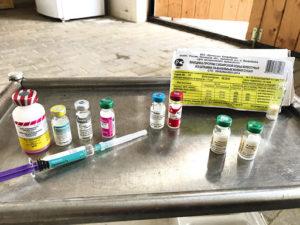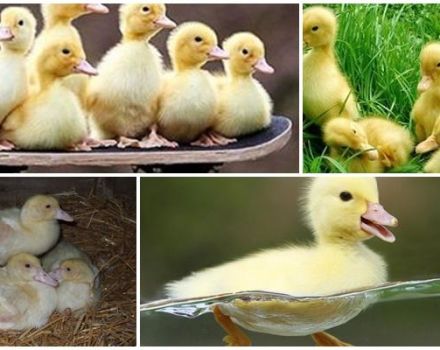Why you need and how to shoe a horse correctly, types of structures
Many people are interested in why horses are shod. This procedure helps to protect the hooves of animals. It helps to avoid the impact of uneven ground or hard asphalt on the lower limbs of the horses. This prevents damage and other problems from occurring. There are several types of horseshoes, each of which performs its own functions.
What are they needed for?
People started shoeing horses in ancient times. At first, they were put on heavy metal boots. However, then it became clear that such shoes cause discomfort in animals. It was then that metal hoof pads were invented.
The use of horseshoes helps to avoid the impact of uneven ground or durable asphalt and concrete pavements. With this product, it is possible to achieve reliable protection of the sole of animals. In winter, special thorns that are screwed into the metal make the horse more stable in the presence of ice and increase its passability.
Horse hoof structure
The structure of the hoof includes the following components:
- The stratum corneum, which includes several layers. The inner one ends in a white line that is clearly visible on the hoof. Nail holes are located along this zone, since it does not have nerve endings.
- Outsole - takes up most of the impact load of the limb.
- Horn arrow - its main function is to reduce the shock wave. This means that this part of the hoof has a cushioning function.
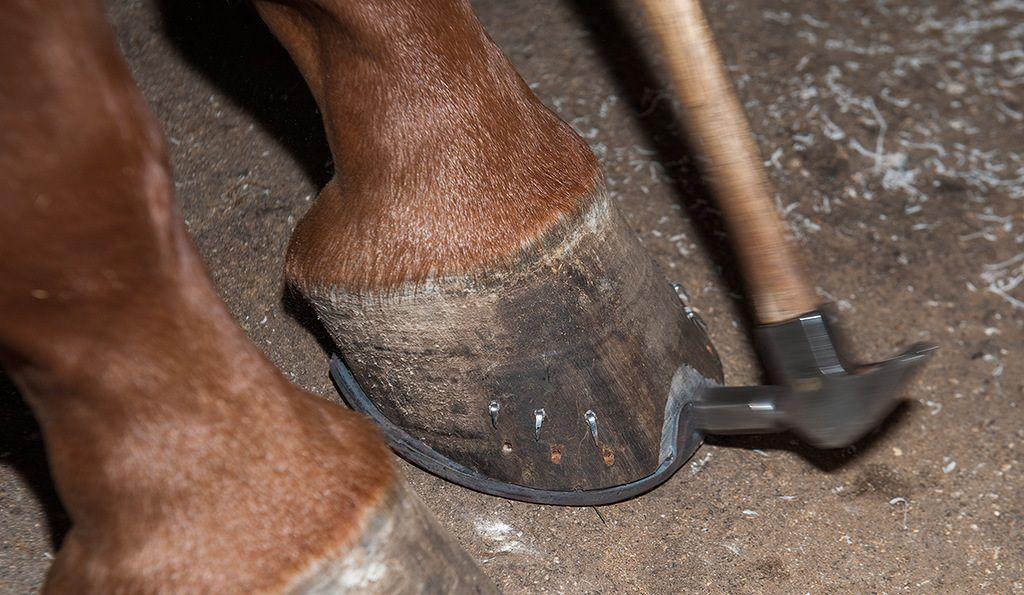
Does the horse feel pain when shod?
Many people believe that the animal feels pain the moment the nails are driven. However, in reality this is not the case. In structure, the stratum corneum resembles a human nail, but it is more durable and thick. Therefore, pain appears only with accidental damage to living tissues. However, it is not recommended to shoe a horse without some preparation, as resistance can be met. It is not related to pain, but to fear. A young animal must be taught to give a leg to a blacksmith.
Product design
A simple horseshoe is a curved plate that has 2 branches. The inside rests on the hoof and the outside touches the ground. A toe or lapel is located in front. The horseshoe has a path for nails and holes for spikes. They help the horseshoe to connect to the ground.
The part of the product that is adjacent to the stratum corneum can be divided into external and internal. The first element has a larger area. It is important that it is as flat as possible as it provides support for the hoof.
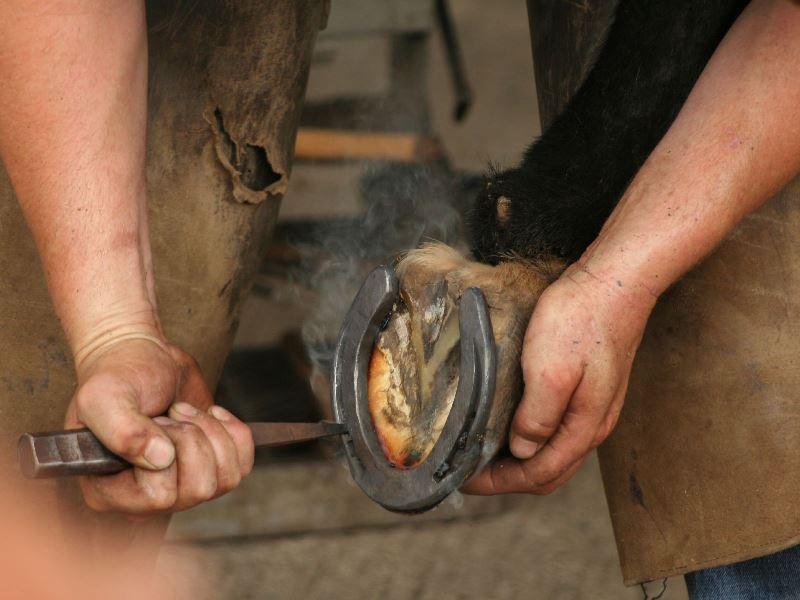
Below is the nail track. After fixing, the nail heads are buried in it. This avoids erasing them. There is no track in the toe and heel area.
It is recommended to nail the horseshoe onto the animal's hoof with extreme caution to avoid damage to the tissues under the cornea.
Varieties of horseshoes
There are several types of horseshoes, each of which has certain modifications.
Sports
This type of product is required for participants in competitions and races. They are made from spring steel. Also, different alloys or aluminum are used for this purpose. These horseshoes are highly durable and lightweight.
In this case, the weight and shape are determined by the competitions in which the animal participates. For horse races, you need to use lightweight products weighing no more than 120 grams. For all-around, heavier horseshoes are suitable, which weigh 180-200 grams.

Standard
These old horseshoes have been used since time immemorial. They are used for working horses. The horseshoe weighs at least 200 grams. Taking into account its size, its mass can reach 720 grams. Also includes removable spikes. For summer, small products are used, for ice - large enough.
Orthopedic
Such products are made from plastic, steel or aluminum. Horseshoes are chosen individually, taking into account the traumatic injury. The design of the product is determined by the needs of the horse. Orthopedic models help to manage pain, achieve quick healing and even gait.
In appearance, horseshoes are similar to shoes, which have spring clips and plastic straps. This does not apply nails. This allows you to quickly replace the horseshoe. Such models are quite expensive. Therefore, horse breeders are often forced to use more affordable plastic options. They are fixed with small nails or glue. In appearance, the products do not differ from the standard ones. There are modern horseshoes that are designed for horses and are fixed with glue.
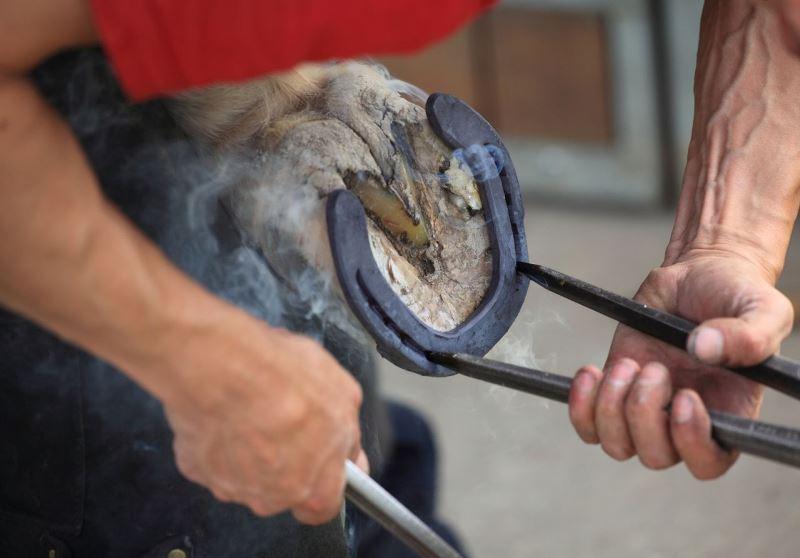
What tools will be needed
To shoe a horse, you can use standard tools:
- cutting - is a hook that is used to care for hooves;
- pliers - help to remove old products;
- nails;
- forging hammer;
- cleaver or knife - with its help they remove the old layer of the sole;
- pliers - required to remove nails;
- file for processing hooves;
- rasp;
- anvil.
It is allowed to use nails only once. Reuse of products is strictly prohibited.
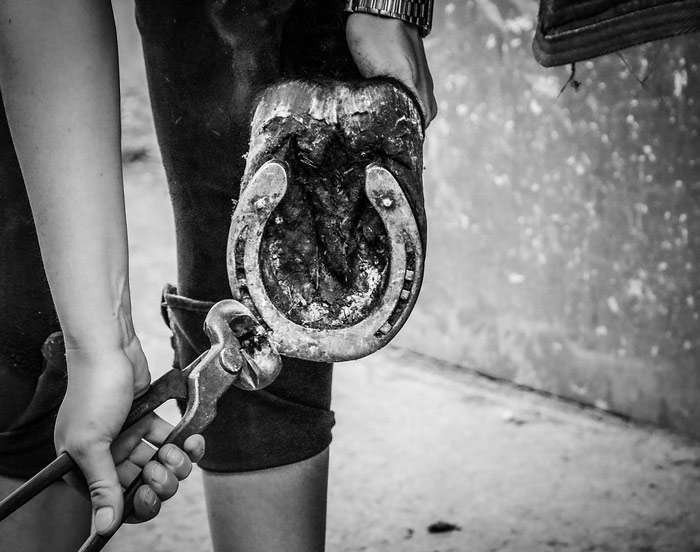
Forging process
To shoe a horse, it is recommended to take into account its load and the growth rate of the stratum corneum. For ordinary working animals, the procedure is performed once a month. Athletes need to do it more often. Horses that rarely hit the pavement do not need this manipulation at all.
To carry out the procedure, you should first remove the old horseshoes, thoroughly clean the sole from dirt. Then you need to take measurements and nail the horseshoe again. This process is conventionally divided into several stages. To shoe a horse, it is recommended to do the following:
- Remove debris from the outer parts of the hooves. The procedure should be carried out with a hook. It is recommended to do this very carefully.
- Rip off the horseshoe. This is done with a sharp movement using pliers. You need to take out the product with nails.
- Brush the hoof thoroughly again. After that, cut off the regrown cornea with a special knife.
- Grind the surface and edge of the hoof. It is recommended to do this with a file. As a result, the surfaces should become flat and smooth. The tightness of the fit of the product depends on this.
- In the same sequence, clean and process all limbs.
- Take measurements and fit horseshoes.
- Try on the product again and attach it to the hoof. This is the most difficult and important stage. Even a slight inaccuracy can lead to injury to the animal's limb.
- Bend the nails back, nail to the bottom of the hoof and fit the toe tightly. In doing so, it is important to avoid mistakes or errors. If a displacement occurs during the procedure, the work will have to be redone. In such a situation, it will be necessary to hammer nails again.
- Remove the ends of the nails by cutting. To do this, the limbs of the animal should be lifted in turn on special metal supports.
- Rasp the outer edges of the shoe and hoof again. If necessary, fix the spikes. Since new products have no holes, you can drill them yourself.
Shoeing a horse is not too difficult. However, for this it is worth preparing a certain set of tools and strictly following a specific sequence of actions. To avoid mistakes, it is recommended to contact a professional technician.

